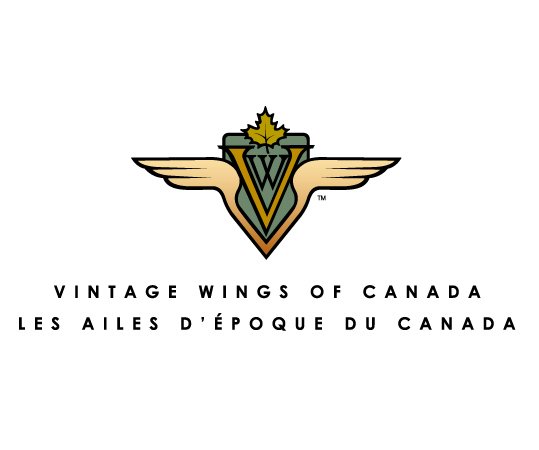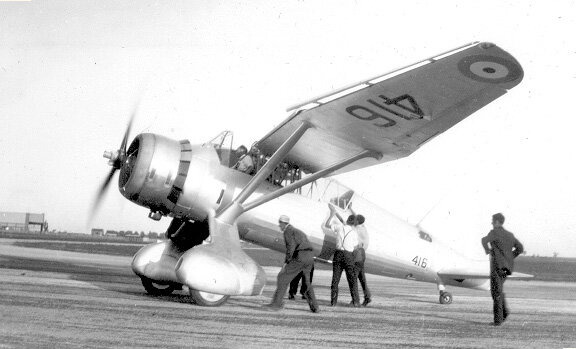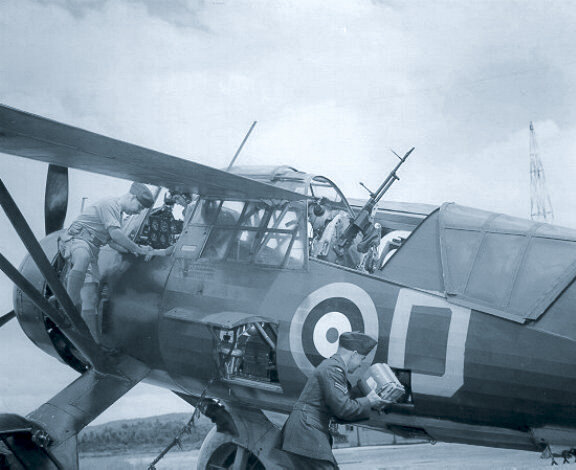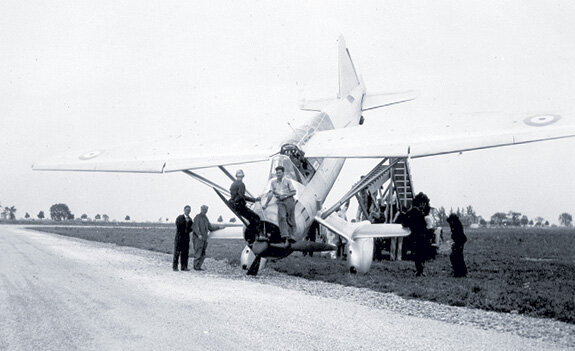THE MALTON LIZZIES
In the mid 1930s, National Steel Car of Canada, a major builder of rolling stock for Canadian railways, based in Hamilton, Ontario decided to venture into the aviation business as well. For their new aircraft division, they kept their iron horse company name but set up new hangars and assembly facilities at Toronto's Malton Airport, about an hour's drive north of Hamilton. Their first contract was to build under licence a number of Westland Lysander II aircraft.
They began construction of their hangars and factory in 1936 with tooling and production line construction for the Lysander beginning in April of 1938. By the next year the first Canadian-built Lysander took to the skies over Malton and the beginning of a great aircraft industry was underway. Shortly after the war began, NSC started to build the Avro Anson under contract and the facilities grew commensurate with the growth in production. Eventually the NSC factories would be purchased by the federal government and Victory Aircraft was created - becoming the largest aircraft production facility in Canada, producing more than 430 Avro Lancaster bombers and other aircraft for the air forces of the British Commonwealth in Europe. Victory aircraft would in turn mutate into Avro Canada, builders of the magnificent but failed CF-105 Arrow project.
Tucker Harris, National Steel Car’s Aircraft Division final assembly chief foreman, began work at Malton in 1939 just as the first Lysanders were being constructed. His collection of photographs provides us with a dramatic view of the first major military aircraft production in Canada in the Second World War. This photographic collection is imbued with the excitement, pride and hands on work of this grand period in Canada's aircraft production industry. As we get set to bring our Lysander up to flying status, we reflect on the first of a line of Lysanders that stretches to our Lizzie.
Harris would stay on with Victory Aircraft until close to the end of the war. Sadly, Tucker Harris was killed just a month after VE day in an airplane crash near Longueil, Quebec. He was at the time employed by a company flying supplies to mining operations in Labrador. The seaplane he was returning aboard struck a tree in dense fog along the St. Lawrence River, killing all five on board.
Vintage Wings of Canada gratefully thanks Paul Huether for not only bringing this remarkable collection to our attention, but for caring for these historic photographs and researching Harris' life and the beautiful aircraft and robust industry he helped build. Paul Huether's mother-in-law was Tucker Harris' widow and upon seeing the interest he had in Canadian aviation, she entrusted the safe keeping of these images to him. It was the right move.
National Steel Car technicians, engineers and assembly workers take a lunch break out on the ramp at the Malton factory to get a good look at the newly completed Westland Lysander II, the first to be completed by NSC. At the time of construction, the aircraft was given a 3 digit RCAF serial number - 416. It was a different era, when factory workers wore dress pants and long sleeve shirts, engineers wore suits and ties and even a fedora. Photo: Tucker Harris Collection
In an area next to the assembly hangar, the test pilot of Lizzie 416 runs up the Lysander’s Bristol Perseus engine. In most of the photos from this period, there was always a number of National Steel Car employees out to watch the show - such was the novelty of the first completed aircraft to come off the assembly line. It was however not the first Lizzie to fly in Malton’s skies - Westland Aircraft of Yeovil, Somerset in England sent one across the pond as a “pattern” for the licence construction of a further 75 Perseus XII powered Lysander IIs. Photo: Tucker Harris Collection
416, the first Canadian-built Lysander looks splendid in her factory test finish - all-over aluminum paint with wing tip and fuselage roundels and prominent serials. As you will see throughout these photos, the metallic aluminum paint reflects so much light from that massive tail that it seems to disappear into the sky. If by chance this is a photo from her first flight on August 16th, then the pilot in the white shirt is Lee Capreol. Photo: Tucker Harris Collection
Taken at the same time, I believe, as the previous photo, the elegant (some say ugly) lines of this quirky aircraft are evident, as is the once bucolic setting of the Malton Airport. The Lysander had a magnificent spread of quite oddly shaped wings. These photos are believed to have been taken in August of 1939, just as the Second World War was heating up to the point of ignition. The RCAF took delivery of 416 in the all aluminum finish on September 1st 1939, the day Hitler invaded Poland. So, you could say she was in it from the start! Photo: Tucker Harris Collection
Related Stories
Click on image
Boys indeed. Photo DND
National Steel Car Lysander II 416 rumbles along a taxi strip at Malton in the summer of 1939, kicking up a cloud of dust as she does. She was soon delivered to No. 110 and 112 Squadrons at Rockcliffe Air Station in Ottawa. In January of 1940, she was flown across the country to Patricia Bay, British Columbia where she was taken on strength with No. 111 Squadron and painted overall camouflage with squadron code TM-A. Photo: Tucker Harris Collection
416 taxies past admiring NSC workers on her way to a test flight. The life of many an aircraft in the employ of the RCAF, as 416 was to experience, could be short lived. After four years of steady employment at both Rockcliffe and Patricia Bay, she was deemed surplus and struck off the RCAF list in December of 1944. She spent her final year as a target tug with 122 squadron at Patricia Bay Photo: Tucker Harris Collection
This photo was not from Tucker Harris’s collection but shows her in elegant repose with all her access panels attached. Photo: Canada Aviation Museum
This is either Billy Barty trying to get a glimpse into the aft cockpit of 416, or it’s a NSC employee reefing on something trying to “fix” it. Photo: Tucker Harris Collection
Triple-chocked and lashed to the tarmac at the tail, 416 is just about ready for some full power engine tests. Her wheel pants and many panels are off and lying in front of her. Photo: Tucker Harris Collection
A view from the side shows the tail lashed firmly to the ground and the heavy chocks - this must be for engine run-ups We wonder what the stairs with the large box on top (and hose running out?) would be used for. Photo: Tucker Harris Collection





























